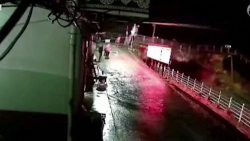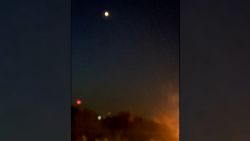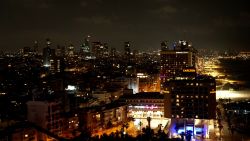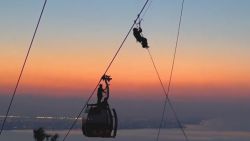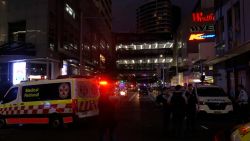The market at al-Hol camp is a sea of unidentifiable figures clad in black, clutching their children’s grubby hands as they drag them past those haggling their wares.
A CNN team approaches a group of Iraqi women. Our request to talk to them sparks debate. “Sisters, don’t say anything,” one woman warns the rest of the group.
“No, sister, we have a right to speak,” another retorts.
They talk over one another, pouring out a litany of grievances. The children are starting to steal. They don’t have money. The conditions are wretched. They want to go home.
Al-Hol is a sprawling encampment for those displaced from the former ISIS territory in northeastern Syria. Wind and sand blow mercilessly against tents in the scorching heat of the Syrian summer.
About 15% of the inhabitants here are foreigners, but the international community has for months neglected the camp. And as living conditions worsen, nostalgia for ISIS’ rule is beginning to brew.
The camp’s population rocketed from 9,000 to 70,000 after ISIS made its last stand in the Syrian town of Baghouz in March. Weeks of battle led to a large outflux of displaced people, mostly the families of ISIS fighters.
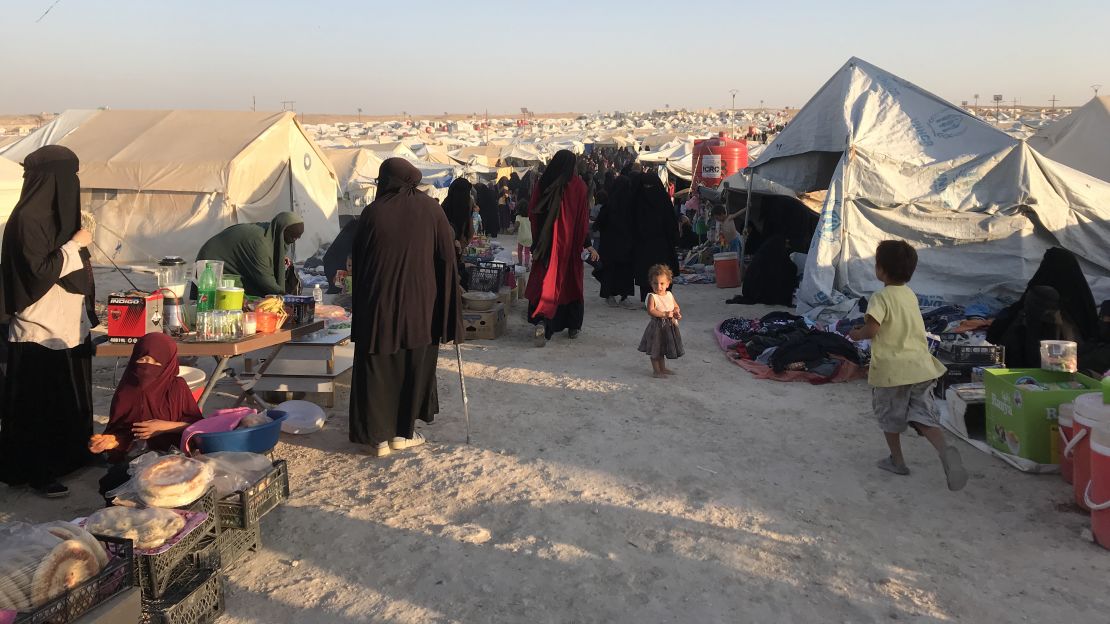
Around 50,000 of the camp’s inhabitants are children, and most of the rest are women. They are the ones who held out in the rapidly shrinking so-called caliphate until the very end.
And while some of the mothers have tried desperately to find a way out of the camp, many are trying to bring their fundamentalist utopia back to life.
“We started to notice that the new arrivals were very well organized,” says Mahmoud Karo, who is in charge of the camps in northeastern Syria’s Jazira district. “They organized their own moral police. They are structured.”
Draconian laws
Beneath a cloak of secrecy, the radical women inhabitants have continued to enforce the draconian laws of the former so-called caliphate.
They police women’s allegiance to ISIS, punishing those suspected of wavering in their support for the extremist group.
Adherence to fundamentalist dress codes is closely supervised with sometimes lethal punishment meted out to those who fall out of line.
“The camp is the best place to develop the new ISIS. There is a restructuring of the ISIS indoctrination,” says Karo. “You can’t differentiate between who is ISIS and who isn’t.”
Tracking down the perpetrators is difficult, he says. The women, cloaked in niqab, are nearly impossible to identify. They change tents frequently to avoid capture.
A Pentagon report by the inspector general, released last month, warned that the US and its local allies have been unable to closely monitor movements inside al-Hol. A drawdown of the US military presence in the area has allowed “ISIS ideology to spread ‘uncontested’ in the camp,” the report found.
Growing extremism in al-Hol runs parallel to signs of ISIS’ resurgence elsewhere in the region.
ISIS attacks in northwestern Iraq, where the group formerly ruled large swathes of territory, are becoming more frequent, and the group has claimed responsibility for other attacks in the region in recent months.
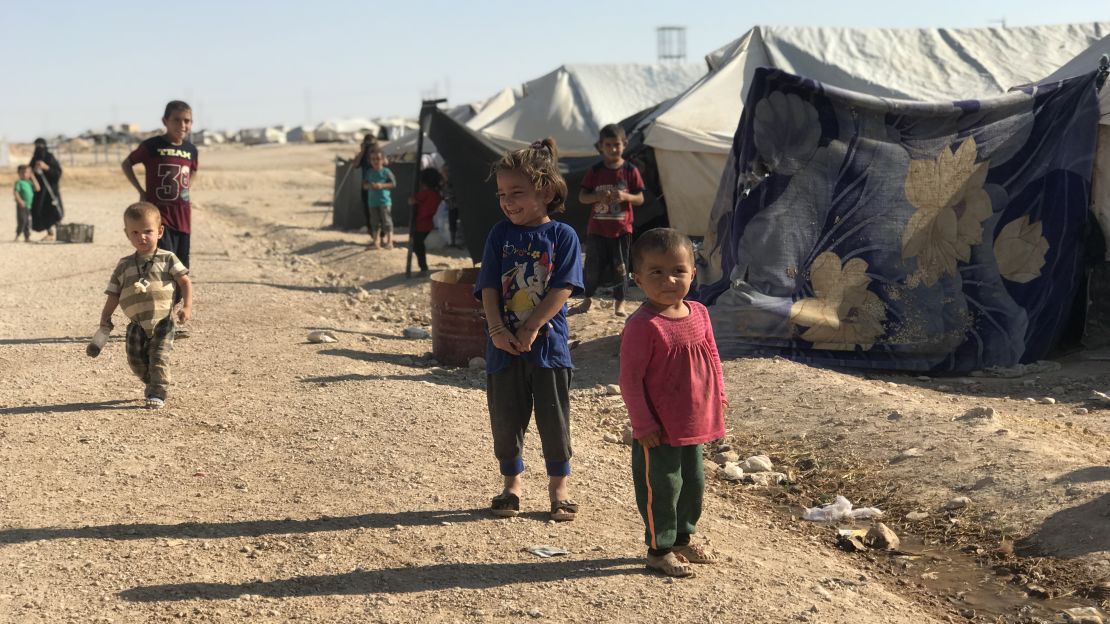
US Secretary of State Mike Pompeo has acknowledged the trend, stating last month that there are “places where ISIS is more powerful today than they were three or four years ago.”
Kurdish camp officials describe al-Hol as an “ISIS academy.” The place is a toxic blend of those intent on incubating ISIS’ ideology and those who want to leave their past behind.
A glaring lack of international involvement and neglect has allowed extremism to thrive, camp officials say.
Around 10,000 people in the camp are foreign nationals from elsewhere in Asia, Africa, Europe and North America. Very few have been repatriated. Bringing them back to their home countries is not something politically popular in Europe and abroad.
‘With the infidels’
Women in the camp marketplace say their ultimate priority is securing the release of their detained husbands and teenage sons who are being held by the Syrian Democratic Forces.
“I tell my children their father is with the infidels,” one woman tells CNN.
“If the prisoners are released, then maybe our hearts and the hearts of our children will sympathize with you,” she tells us. “But if the prisoners aren’t released, the hatred will grow with the women and children.”
Another woman says she does not know what has happened to her detained teenage son. The situation has driven her to the edge of madness.
“If the men aren’t released, the women will become the biggest cell,” she says.
Extremists and escapees
After fleeing Deir Ezzor for al-Hol with his wife and children three years ago, Abdel Qader Mohammed opened a barber shop in a small cement-and-brick room in the camp.
One of the camp’s first inhabitants, Mohammed arrived before the influx of those who had stayed on with ISIS as the group made its last stand. He is one of the few men in the place – and the only person we met who was willing to speak out against ISIS.
“I came here to escape ISIS and now we are in a camp full of ISIS,” he says. “We can’t talk to the ISIS people here. Even [as] we cut hair, they start telling us that we are infidels.”
In one of the tents, a woman says she is desperate to get out of al-Hol’s stifling atmosphere. But there is no rehabilitation program for people in the camp, and no effort to separate extremists from those who reject ISIS.
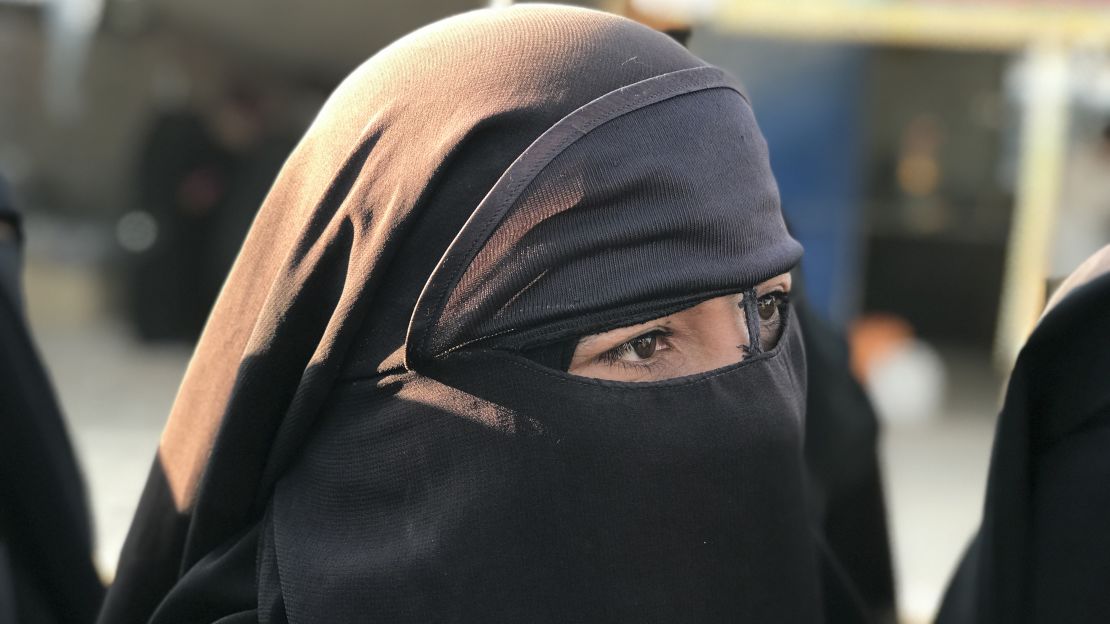
One Telegram chat group has turned the al-Hol “death camp” into a rallying cry for ISIS. In Arabic, English, French and Turkish, it details what they call “atrocities” committed by the “pig enemies of Islam” and calls on the “lions” – a reference to extremist fighters – in northeastern Syria to “wake up.”
In July, a woman calling herself Umm Bakr al-Ansariya issued a well-circulated fatwa, an Islamic decree, demanding that Muslim aid workers wear the Niqab, and threatened those who defied the order with “punishment by the sword.”
In the same month, video posted on social media showed the black ISIS flag being raised in the Syrian section of the camp.
“It’s a reaction to the psychological pressure on us,” a woman living in the Syrian section of the camp explains. “They should know that more can be done than the raising of a flag.”
The foreigners’ section
In the foreigners’ section of the camp, a little girl with a blond ponytail zips around a playground on a toy scooter. She plays with other children, a mix of Europeans, Asians and Africans.
“Are you scared of us?” a 23-year-old German woman asks.
“Should I be?” I reply.
“I am just asking,” she says, wondering aloud why her country won’t take her back. She says she no longer wants to live by the rules of the so-called caliphate.
“This isn’t a camp. It’s a prison,” she says.
Residents here say they live in fear of the camp’s ISIS vigilantes. Another woman tells us her tent was burnt down. Her friend says she’s so afraid of being stabbed she barely sleeps.
One foreign woman strangled her niece for removing her niqab, while another was beaten for cleaning in front of her tent without a niqab, Karo says.
Caliphate captives
Outside the camp, a prison controlled by the predominantly Kurdish, US-backed Syrian Democratic Forces (SDF) offers a starkly different scene.
Detained ISIS fighters are indulged in painting and creating papier mâché models. Around a dozen of them crouch over a long table, crafting a miniature football stadium, houses, cars, animals and flowers.
The walls are lined with other creations: a model town with twinkling lights, a mosque, a church.
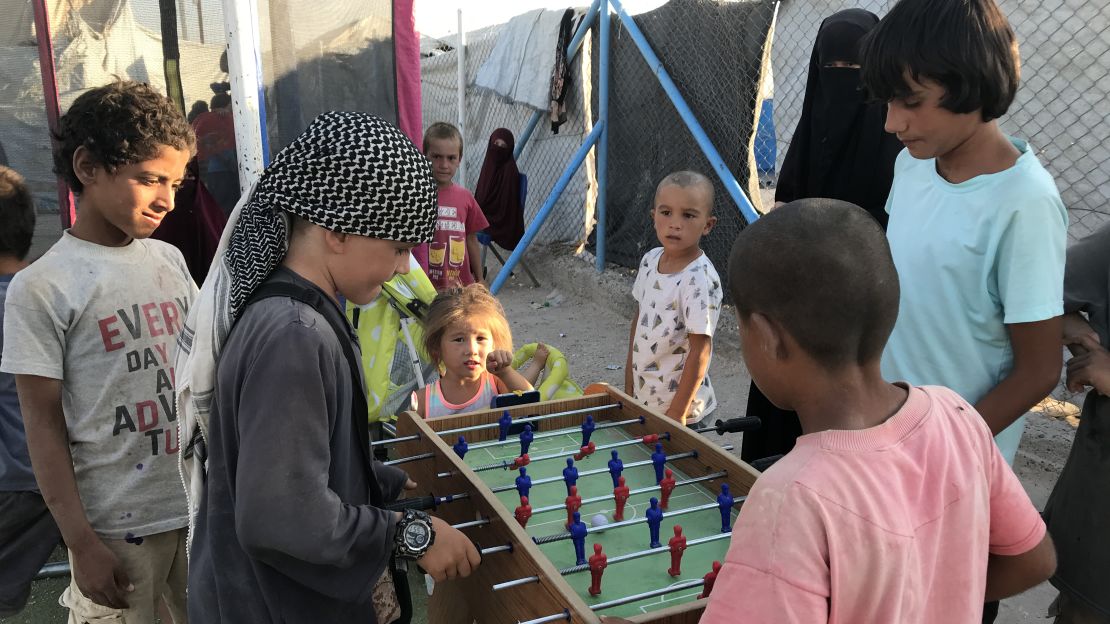
“We’re making this from nature,” detainee Ali Othman says with a chuckle. “Can you help us?”
Othman says that ISIS held his family hostage in Raqqa, the former seat of their power, and coerced him to join their ranks. He was tasked with planting bombs in another town.
One day, he received a plastic bag that exploded, taking his right hand. He covers it with a glove these days. He is serving 20 years, the maximum sentence.
There is no death penalty here and prisoners can get early release for good behavior – unlike authorities in Damascus and Baghdad, Kurdish forces are banking on leniency.
They are also trying to separate extremist inmates from those who appear to have parted ways with their pasts – a policy that is not being applied in al-Hol.
Some of the detainees claim they were arbitrarily detained. Others say they are innocent but were turned in by family members who themselves were members of ISIS. Some, like Othman, admit to joining but claim they had little choice.
Rehabilitation, recovery
Nearby, at the al-Houri Rehabilitation Center, scores of teenage boys are either serving ISIS-related sentences or have been identified as having radical tendencies.
“Abdullah,” 15, says he joined ISIS when was 12 years old. We’re calling him Abdullah to protect his identity. It is not his real name. He trained for months before being dispatched on his first mission: to plant explosives at a US base.
“They brought us sticky bombs to place under the fuel tanks of the vehicles,” he remembers. “We got suicide vests and weapons. We put the vests on and took our weapons and then wore women’s niqabs to hide everything.”
The operation failed and he ended up in prison. Later, he was transferred to the rehab center. “I was able to distance myself. It was a mistake. I learned from it,” he said.
Other children show visible signs of trauma. One child, “Hassan,” was the son of an ISIS emir who used to behead people and give the heads to Hassan to use as soccer balls. Hassan is not his real name, but one we are using to protect his identity.
In the rehab center, “Hassan” is a recluse; he does not want to be interviewed.
The center’s administrator, Musab Mohammed Khalaf, does not know if he will ever truly recover.
The rehab center is trying to provide basic psychological support to help Hassan and others recover. But resources are limited, and the trauma is more than can be imagined. It’s anyone’s guess as to how much the ISIS indoctrination can be removed from a teenage mind.
“If the situation stays like this and nations don’t help, ISIS will come back,” Khalaf warns. “We hear about it, the sleeper cells, they take advantage of the children, trying to recruit them.”
The al-Hol camp is a desolate, miserable place nations want to wish away. It stands as a legacy of yesterday’s war.
And that is what makes it uniquely dangerous, because if it is allowed to fester, this sprawling camp contains the seeds of the next war, of ISIS’ revenge generation.
This story has been updated, and the name of the rehab center has been corrected.
CNN’s Tamara Qiblawi contributed to this report.




